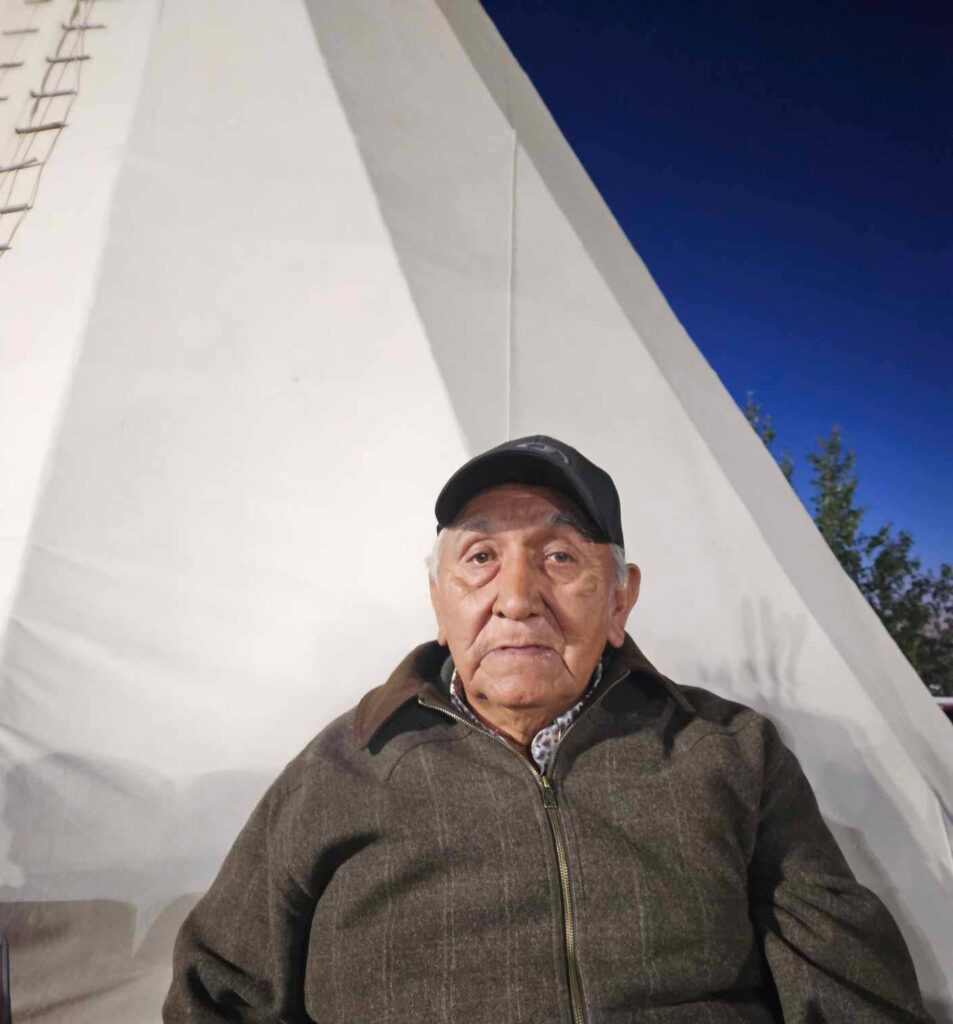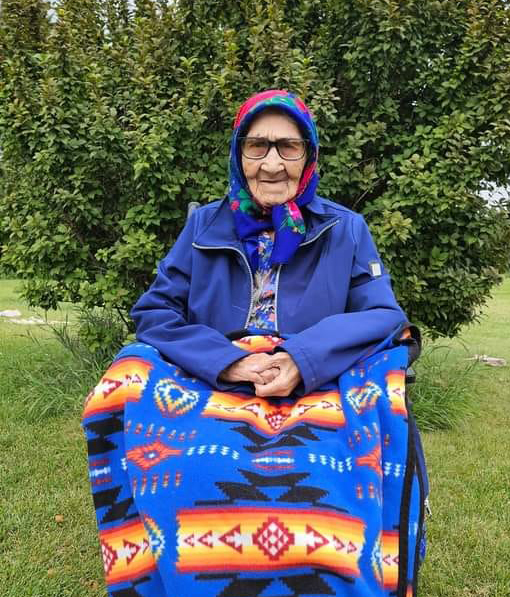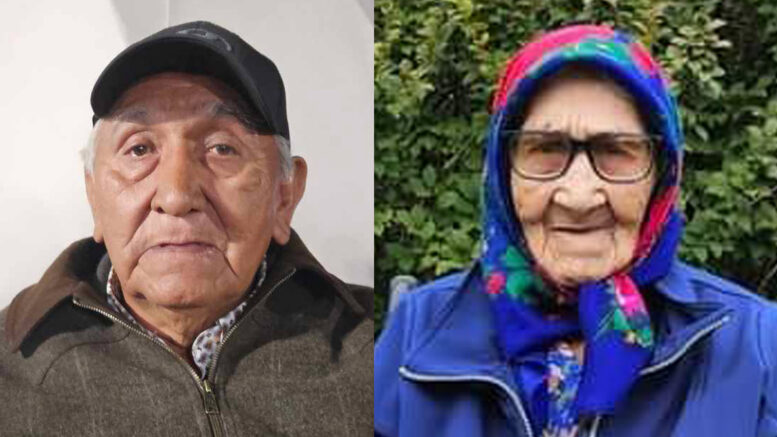By Chevi Rabbit, Local Journalism Initiative Reporter
(ANNews) – Traditional hand games are often part of Powwows and other gatherings held in Cree communities. This summer Alberta Native News reporter Chevi Rabbit embarked on a journey into the enduring significance of Cree hand games through interviews with two esteemed elders: Cecil Crier of the Samson Cree Nation and Mariah Rabbit of the Montana Cree Nation.
Cecil Crier’s discussion occurred on-site last month at the Samson Cree Nation Powwow, while Mariah Rabbit’s conversation occurred in her home with her daughter, our Cree interpreter.

Elder Cecil Crier at the Samson Cree Nation Powwow. Photo by Chevi Rabbit.
With deep cultural significance, these traditional hand games have transcended time and are celebrated today. Cecil Crier, a member of the Samson Cree Nation, shares the legendary origins of the Cree Hand Games and their contemporary role in events like the Samson Cree Nation Powwow and tournaments.
Cecil Crier, a revered elder of the Samson Cree Nation, is a passionate advocate for Indigenous culture. In his eyes, Cree hand games are far more than mere entertainment – they were initially about “healing.”
Through his captivating narratives, Crier transports his audience into the Cree legends of the origin of the Hand game, as he recounts, “The story goes, in the past Cree hunters ventured into the wilderness, and the Cree hunters were ambushed by another Indigenous group, resulting in the injury of a Cree man.”
He explained, that in the depths of his pain, the injured hunter experiences a surreal encounter with “little men.”
The legend goes that these enigmatic beings engaged in an enthralling hand game with song and dance for the injured Cree man. After listening to the music and dance of the little people, he was “healed.”
Crier says, “Hand games, are originally about healing and coming together as a community; it’s fun. Nowadays, we add it to our Powwows, and it’s done as a tournament.”
At the Samson Cree Nation Powwow, the Cree hand games were a prominent feature, taking place just off to the side of the arbor and often continuing late into the night.
Crier concludes the interview, “Hand games are a place where everyone is welcome to join, watch, and sit, and when you are comfortable, join in.”

Elder Mariah Rabbit. Photo by Chevi Rabbit.
At 95 years old, Mariah Rabbit, an honourary doctorate recipient from Maskwacis Cultural College, remains as sharp as ever, frequently sharing her stories with her adult children. She resides with her daughter, Lavinia Schug (Rabbit), an Elder herself and Cree cultural advisor.
Mariah Rabbit (Cabry) married Cree leader Joe Rabbit from the Montana Cree Nation and was originally from the Cabry family of Samson Cree, a lineage that includes her nephew, Samson Cree leader, Kurt Buffalo, the prominent advocate Sherry Green, and gifted artists like Edmonton’s beloved ‘Cree Drummer Boy’ Noah Green, and numerous others who remain steadfast in preserving the cherished traditions and values of Indigenous people as an ancient traditional family of knowledge keepers. The Cabry family also has a unique history of political intermarriage with various other families, resulting in changes in last names for Mariah’s late sisters after each marriage.
Mariah Rabbit (Cabry) warmly reminisces about her childhood when her father, John Cabry of Samson Cree Nation, played the traditional Indigenous game known as Cree Hand Games with other Plains Cree Farmers. For her, hand games were a leisurely activity intricately woven into the fabric of changing seasons, with particular significance during the harvest season and the warm summer months.
“In Maskwacis, we were a farming community,” explained Elder Mariah. “My ancestors have roamed this area and have been part of Ponoka, a fairly new community that has grown in recent years. But our family has been here since time immemorial, deeply rooted in this land.”
Mariah’s fond memories take us back to her family’s migration to the Battle River area in the early 1900s. “John Cabry, my dad, would camp near Battle River during the harvest. The game was played on Saturdays and Sundays; the men would take a break from harvesting and engage in hand games as a leisure activity,” recalled Mariah, likening it to playing cards.
Mariah offers insights into the gameplay of Hand Games, with her daughter Lavinia translating. The objective is to guess the location of hidden bones or sticks, employing a combination of strategy, bluffing, and traditional songs. Players sing and visualize while the opposing team attempts to mislead through gestures.
The interviews with Cecil Crier and Mariah Rabbit present a multifaceted portrait of Cree hand games. These conversations underscore that these games are not just a source of entertainment; they are potent tools for preserving cultural heritage, forging tight-knit community bonds through traditional games.



Be the first to comment on "The renaissance of Traditional Hand Games at Powwows and cultural gatherings"